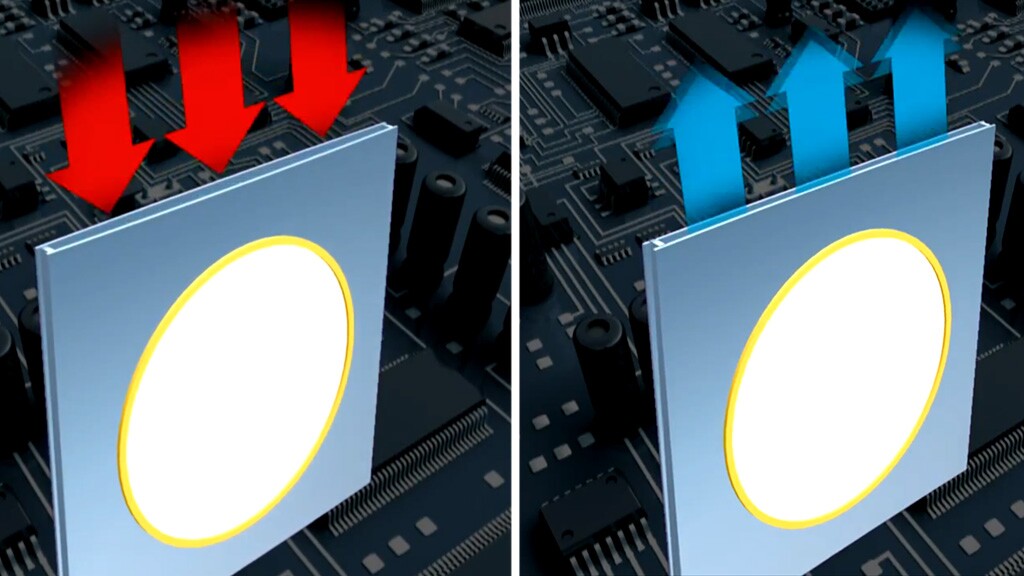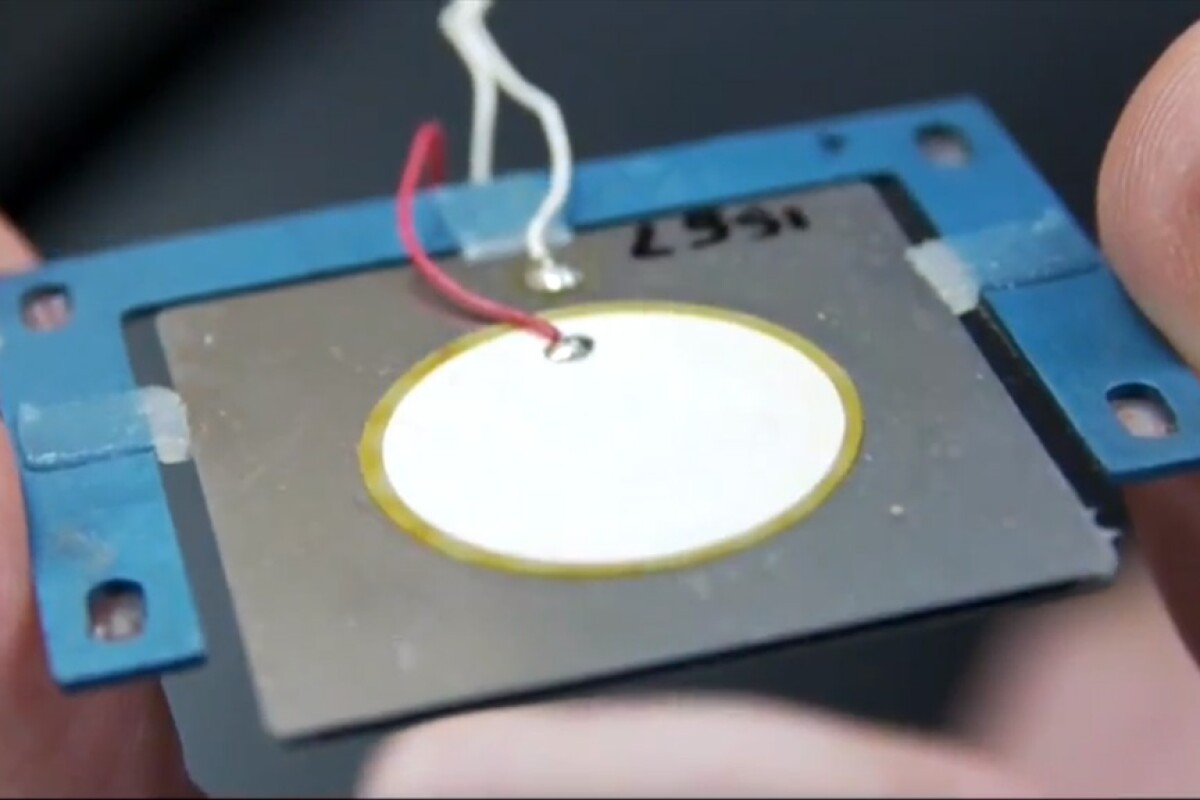Despite their shortcomings, fans do a good job of cooling things down inside PC chassis. Unfortunately, their bulky shape and drain on battery life doesn’t make them a viable option for thinner form factors, such as tablets and smartphones, limiting the processing grunt that can be crammed inside such devices. Inspired by lungs and by adapting technology that improves airflow through jet engines, researchers at GE have created a super-thin cooling device they say will enable thinner, quieter and more powerful tablets and laptops.
Rather than relying on rotating blades to extract the hot air from around the electronics, the device developed as GE Global Research uses vibrations generated by a piezoelectric material. The device, which has been dubbed the "dual piezo cooling jet," measures just three millimeters thick and consists of two nickel discs that are connected on either side to a sliver of piezoelectric ceramics.
When an alternating current is passed through the ceramic component, it expands and contracts at up to 150 times per second so that the nickel discs act like a bellows. When the piezoelectric material constricts, the edges of the two nickel discs are pushed together so that they bend away from each other and suck in hot air from the surrounding area. Then, when the piezoelectric material expands, the nickel discs come together and the air is expelled from the center at high velocity.

Unlike cooling fans, the device has no bearings and doesn’t require a DC motor to run. It is also much thinner and consumes less energy than a fan. GE estimates that its cooling technology could add an extra 30 minutes of battery life to a laptop. Additionally, it says the dual piezo cooling jet can move the same amount of air as a comparable cooling fan twice its size while consuming half the amount of electricity and being cheaper to make. The technology is also scalable, so can be made smaller or larger to suit the application.
The research team, led by GE Global Research’s lead thermal systems engineer, Peter deBock, has already swapped their device for a fan in a laptop. “We had a lot of space left over,” deBock says. “It can make the laptop thinner or allow adding more electronics.”
Having received the first patent for the technology back in 2004, GE has licensed it to Japan’s Fulikura LTD, a major manufacturer of cooling devices.
The GE researchers explain their dual piezo cooling jet in the video below.
Source: GE via Extremetech










